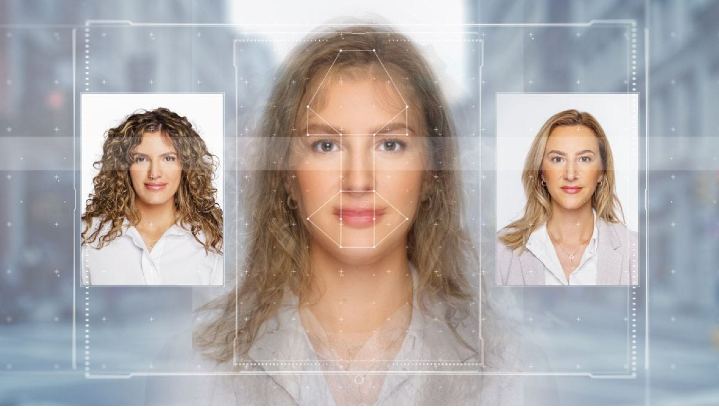deep fake detection & analyze
IntSpy Deepfake Detection & Analysis: Detect, Verify – Advanced Solutions for Identifying Synthetic Media and Protecting Authenticity



[MODULE]Deepfake Detection & Analyze on platform
IntSpy Deepfake Detection & Analysis Overview
The IntSpy Deepfake Detection & Analysis module offers advanced tools for identifying, verifying, and analyzing deepfakes across video, image, and audio content. Designed for government agencies, corporate entities, media organizations, and intelligence professionals, this module provides comprehensive detection of synthetic or manipulated media, helping users safeguard against misinformation, fraud, and reputational risks. By employing state-of-the-art AI and machine learning techniques, IntSpy ensures that users can trust the authenticity of the information they encounter.
Key Features and Sub-Modules of Deepfake Detection & Analysis
Video Deepfake Detection and Analysis
- Video Manipulation Detection: The module analyzes video files to detect manipulations such as face swaps, re-enactments, or synthetic overlays. Advanced AI algorithms examine subtle inconsistencies in frame-by-frame analysis, such as irregularities in lighting, facial expressions, head movements, and eye blinking patterns.
- Frame-by-Frame Analysis: By examining each frame individually, the module identifies slight artifacts or inconsistencies that are often indicators of manipulation. This detailed analysis allows for the identification of anomalies such as flickering, mismatched lip-sync, or inconsistencies in reflections, which are common in deepfake videos.
- Detection of GAN Signatures: The module can identify the presence of Generative Adversarial Network (GAN) artifacts, such as noise patterns or slight pixel distortions, which are often present in synthetic videos. This helps in determining whether a video has been altered using AI-based tools.
- Reporting and Visualization: Users receive a comprehensive report that includes visual highlights of manipulated regions in the video, with frames marked where anomalies are detected. This makes it easy to understand which sections of the video have been tampered with.
Image Deepfake Detection
- Facial Recognition and Comparison: The module can detect whether an image has been altered by comparing it with other images available in open-source databases and internal records. It uses facial feature mapping to verify the authenticity of a given photo.
- Anomaly Detection: The system detects specific manipulations like facial alterations, body morphing, or background tampering. By analyzing elements such as shadows, reflections, and texture inconsistencies, the module can spot discrepancies that are not consistent with natural imagery.
- Metadata Analysis: The module also extracts and analyzes image metadata (EXIF data) to verify the consistency of details such as timestamp, geolocation, and device information. Manipulated images often have inconsistencies in their metadata, indicating alterations.
- Visual Artifact Identification: AI models are used to detect subtle artifacts left by manipulation tools, such as smudging, blurring, or pixelation. These artifacts are often a result of blending synthetic elements with authentic backgrounds.
Audio Deepfake Detection
- Voice Synthesis Detection: The module can detect whether audio has been synthetically generated or altered using voice synthesis tools. It analyzes characteristics such as intonation, pitch variations, and speech patterns that are often difficult for synthetic voice generators to replicate naturally.
- Speaker Verification: The module cross-references the audio with known samples to verify the identity of the speaker. This is particularly useful for detecting impersonation attempts in social engineering or scam calls. The system compares unique voice signatures, such as vocal timbre, and matches them to verified samples.
- Spectrogram Analysis: Advanced spectrogram analysis is used to visually represent the frequency and amplitude of audio signals. The system uses machine learning to detect irregularities in spectrogram patterns that indicate manipulation, such as missing frequencies or unusual changes that are not consistent with natural speech.
- Background Noise Analysis: The module analyzes background noises and environmental sounds within the audio. Deepfake audio often lacks authentic background cues or has inconsistencies that point to synthetic generation, allowing users to determine the validity of the recording.
Integration with External Databases
- Cross-Reference with Public Sources: The module integrates with external data sources, including public databases, social media profiles, and internal archives. By comparing content with existing records, users can validate whether images, videos, or audio match original versions, helping verify authenticity.
- Open-Source Intelligence (OSINT) Integration: The module can utilize OSINT tools to gather additional data related to the suspected deepfake content. This cross-referencing allows users to further investigate the origins of manipulated media and verify its credibility.
Real-Time and Batch Processing
- Real-Time Deepfake Detection: Users can upload media files for real-time analysis. The module processes the content rapidly and provides instant results, making it suitable for urgent investigations or live event monitoring.
- Batch Processing for Large-Scale Analysis: The module also supports batch processing, enabling users to analyze multiple files simultaneously. This feature is ideal for media organizations or government agencies that need to screen a large volume of content for manipulations.
Alert and Notification System
- Custom Alerts for Manipulated Content: Users can set up alerts for specific types of media or particular content sources. For instance, if deepfake content involving a specific individual or topic is detected, users will be notified immediately.
- Threshold-Based Alerts: Alerts can be customized based on detection confidence levels. Users can specify thresholds, such as high-probability detection of a deepfake, to ensure they are notified only when manipulations are strongly indicated, minimizing false positives.
Reporting and Documentation
- Detailed Reports: The module generates comprehensive reports that include a summary of findings, confidence levels of the detected manipulation, and annotated images or video frames showing the specific regions that were manipulated. Reports also include a visual representation of spectrograms for audio analysis.
- Exportable Formats: Reports can be exported in multiple formats, such as PDF, CSV, or JSON, making it easy to share findings with stakeholders or integrate with other investigation tools.
Use Cases and Applications
Misinformation and Disinformation Combat
- The module helps media outlets and government agencies verify the authenticity of video, image, and audio content, ensuring that manipulated media is not used to spread misinformation. By detecting deepfakes early, users can prevent false narratives from gaining traction and misinforming the public.
Corporate and Brand Protection
- Corporations can use the module to monitor for manipulated media that targets their brand or executives. By detecting deepfake videos or audio used in smear campaigns, companies can take immediate action to protect their reputation and prevent reputational damage.
Fraud Prevention and Identity Verification
- The audio and image detection capabilities are particularly useful for financial institutions and security teams to prevent fraudulent attempts involving synthetic identities or impersonation attacks. The module can verify the authenticity of customer-provided audio or video during onboarding processes.
Law Enforcement and Forensic Analysis
- Law enforcement agencies can use the module to verify the authenticity of evidence, such as video footage, photographs, or audio recordings, submitted during investigations. This ensures that manipulated media is not used as false evidence in criminal cases.
Political Campaign Monitoring
- During election periods, the module can be used to verify the authenticity of political content. Deepfake videos or audio of candidates can be identified before they are spread to sway public opinion, thereby preserving the integrity of the electoral process.
Social Media Platform Integration
- Social media companies can use the module to automatically screen content uploaded by users. This prevents manipulated videos, images, or audio from being shared and ensures a safer online environment.
Key Benefits of the Deepfake Detection & Analysis Module
- Comprehensive Media Coverage: The module supports deepfake detection across video, image, and audio formats, providing an all-in-one solution to identify manipulated content.
- Advanced Detection Techniques: Uses AI-based techniques such as frame-by-frame video analysis, spectrogram analysis for audio, and GAN signature detection to accurately identify manipulations.
- Cross-Referencing for Verification: Integration with external databases and public records allows users to cross-reference suspicious content with known authentic versions, providing additional confidence in the verification process.
- Real-Time and Batch Processing: Offers both real-time detection for urgent analysis and batch processing for large-scale operations, ensuring flexibility in handling different analysis needs.
- Customizable Alerts and Notifications: Users can set up custom alerts to stay informed about potential threats in real-time, allowing for immediate action against detected deepfakes.
Integration and Usability
- The Deepfake Detection & Analysis module is fully integrated with the IntSpy platform, providing seamless interoperability with other modules such as Social Media Intelligence and Cyber Intelligence for a holistic approach to misinformation and threat detection.
- The module’s intuitive dashboard and visual reporting make it easy for users to understand the results of deepfake analyses and communicate findings to stakeholders.
- Scalable Architecture allows the module to handle high-volume analysis, making it suitable for use by large organizations and government agencies that need to monitor multiple channels simultaneously.
